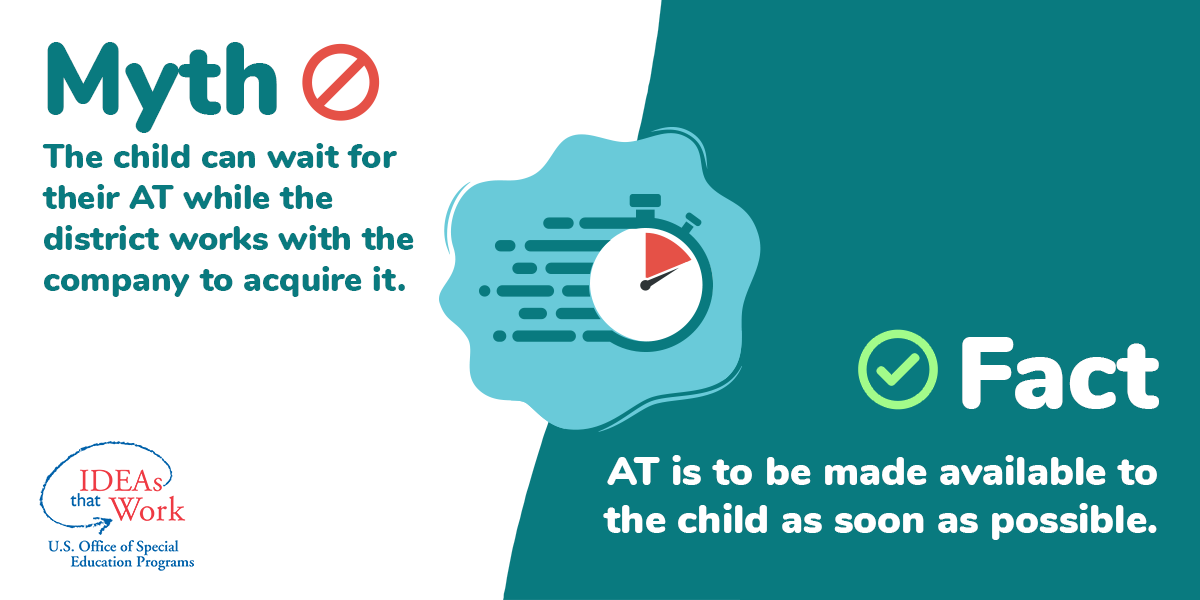Funding AT for Educational Purposes
When the AT will be used at school and possibly for educational purposes in the home and community, the funding typically stems from two main sources. Direct funding can be accessed through the LEA or in some cases, if the student is blind or visually impaired, Federal Quota funds.
LEA
If the AT will be used specifically to support educational activities and supports and the student’s access to FAPE, then the student’s LEA will likely be the funding source. If the LEA purchases the AT, it belongs to the LEA and is generally used in the school environment. The student’s IEP team determines if school-purchased AT devices are able to be used at home or other settings in order to receive FAPE. The LEA is fiscally responsible for any repairs or upkeep needed for the device and is also responsible for providing a comparable device during maintenance or repairs. LEA staff must remember: they cannot delay providing the needed AT devices or services while they are seeking funding either internally or from other sources.

AEM Tie-In:
As with AT devices, accessible formats should be made available to the child in accordance with the child's IEP as soon as possible following the development of the IEP if they are required as part of the child's special education or related services.
Federal Quota
The Federal Act to Promote the Education of the Blind enacted by Congress in 1879 established funding known as Federal Quota, which is supplemental funding for the provision of educational materials for registered students who meet the definition of blindness (MDB), function at the definition of blindness (FDB) or the qualify under the “IDEA definition of a student with a visual impairment” as defined by the American Printing House for the Blind (APH). Educational materials may include braille and large print textbooks and supplemental learning materials, audiobooks, and AT. Funding is based on an annual registration of eligible students in each state which determines a per capita amount of money designated for LEAs to use on behalf of registered blind students for the purchase of educational materials produced by APH.
In Ohio, the annual registration of students and subsequent management of the designated Federal Quota funds are administered by the Ohio Department of Education and Workforce and the OCALI AT&AEM Center. Materials can be requested for registered students by using the Online Order Request Portal. These funds are supplemental and may not address all the needs of a student. While some materials may be able to be provided through Federal Quota, it is supplemental funding and ultimately the responsibility lies with the LEA.
